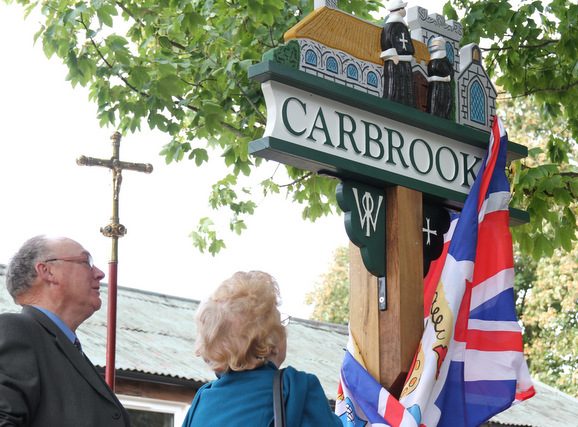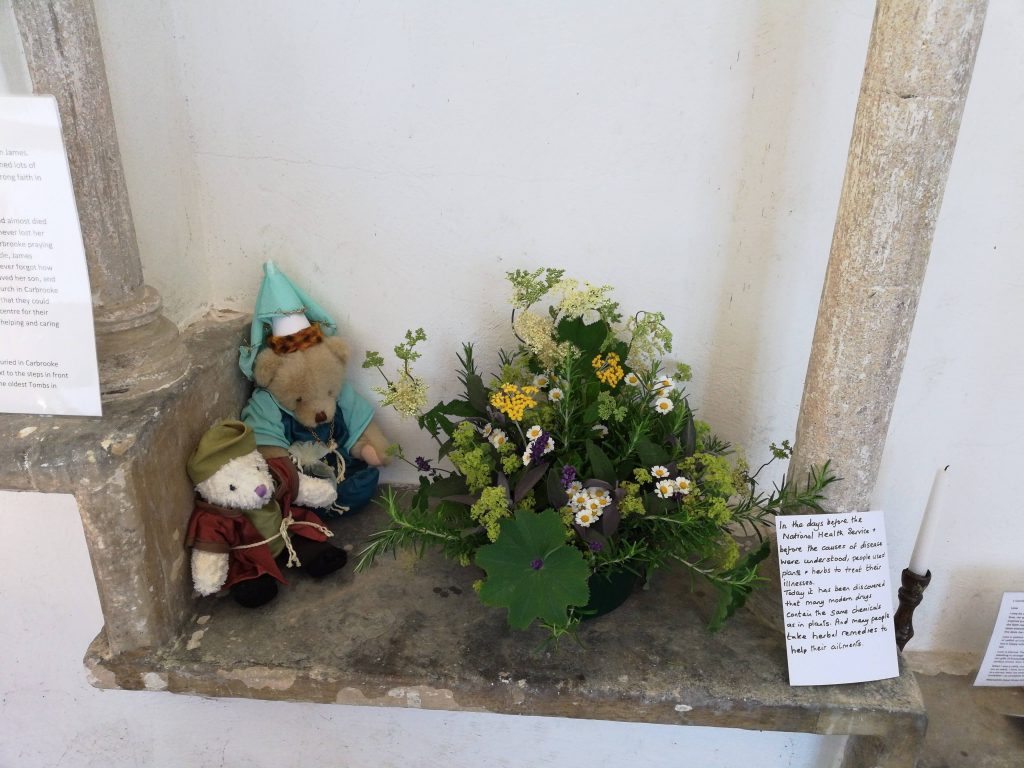
In Carbrooke we have an affection for Matilda ‘Maud’of Clare, as she is credited with founding Carbrooke Church. It is believed that Matilda was born c1132 in Buckenham Norfolk to James de St Hilaire (ancestors fought with William the Conqueror and was rewarded with land), Matilda’s mother was Aveline Aves de Hesding Princess of Scotland.
Matilda married Roger de Clare c1153, they had 8 children, before Roger died in 1173, Matilda then married William de Aubigney in1176 (he founded and is buried in Wymondham Abbey), and they had a further 2 children. Matilda died 1193, and is buried in Carbrooke church with a son Jacob (or possibly James). Their tombs are located infront of the Altar, and supposed to be the oldest tombs in Norfolk.
Extracts from Carbrooke and the Commandery(of the Knights Hospitallers)Published by Helen Riley on behalf of Carbrooke Church as part of the Carbrooke Heritage Project.
The connection between Carbrooke and the Knights Hospitallers was forged by Matilda, Countess of Clare. The Clare family were wealthy and influential, related to Royalty and to many of the noble families in England. They founded sixteen Monasteries in all and were also great benefactors to the Order of Hospitallers.
The first known link between Carbrooke and the Hospitallers was when Countess Matilda of Clare made a gift of the church of Little Carbrooke and sixty acres of land at a place called Durcote, to the Order. The exact date of this gift is not recorded, but it was before 1180
The established church at this time taught what is known as the Doctrine of Purgatory. Put simply, this said that when a person died their soul went into Purgatory, a kind of halfway house, for an unspecified period of time, before it went on to its final destination (heaven or hell). While it was in Purgatory, the final destination of the soul could be influenced by prayers and masses said by those still living, on behalf of the dead person. This led to the practice of both rich and poor alike donating what they could to religious institutions (such as monasteries, Religious Guilds and Religious Orders) in return for prayers and masses to be said for themselves when they died, and on behalf of their forebears.
Gifts to these religious institutions were a way of ensuring that members of the institutions and their priests would say prayers and masses for the dead, and include these prayers and masses as regular part of their religious routine and duties.
Henry II died and was succeeded by his son, who became Richard I (better known as Richard the Lionheart). It was during Richard’s reign that Matilda, Countess of Clare, made a further gift to the Hospitallers of the Church of St. Peter at Carbrooke with its appurtenants and a half of the same village with all its appurtenants. The appurtenants included tithes, glebe land and the Manor, which extended into Great Carbrooke and included more than half of the village lands.
A record of the gift survives today, but it was made about 240 years after the event by Brother John Stillingfleet, while he was compiling a book of Founders and Benefactors of the Order in England. He records that this gift to the Hospitallers was made at Westminster, sometime during the fifth year of King Richard’s reign.
Dates at this time could be confusing. There was more than one calendar in use, with some starting the New Year in September others in January. As a result, official documents were dated by referring to the year of the Sovereign’s reign. The fifth year of Richard I’s reign is documented as being from 3rd September 1193 to 2nd September 1194 by today’s calendar, so Matilda would have made the gift of the second church and lands to the Hospitallers sometime between these dates.
The church of Little Carbrooke has long disappeared but is thought to have stood along the Ovington Road, somewhere between the junction with Drury Lane and the little bridge over the river Wissey.
The Church of Great Carbrooke still stands today and dominates the village with its imposing tower, but in 1193 it would have been half the size, having no tower and consisting only of the smaller building at the front, which is the chancel area today.
It was Matilda’s gift of the second church and the village lands in Carbrooke that led to the Order setting up the Commandery in the village. A Commandery (also called a Preceptory), was run by a Commander, was subordinate to a Priory and was the basic administrative unit in the Hospitaller’s organisational structure.
At this time (the beginning of the 13th Century) burials within the church were still rare, normally an honour reserved for a founder. This suggests that the tombs are those of Matilda, Countess of Clare, founder of the Carbrooke Commandery, and her son. Matilda is known to have had two sons and a daughter. Her eldest son Richard succeeded his father as Earl of Clare and is buried at Clare. Her younger son Jacob was sickly as a child and his life was despaired of on more than one occasion. When Jacob was taken ill, quite a common occurrence by all accounts, his mother regularly appealed to the Saints to cure him. It is recorded that on one occasion Jacob was apparently so far gone that he was laid out for burial, but his mother wouldn’t accept this. The records say that Matilda prayed to St Thomas á Beckett and miraculously Jacob was cured. It is understandable how a pious and devoted mother with such a sickly son might have been drawn to the Order of the Hospitallers, which was fundamentally a nursing order. It is more than probable that mother and son would both have been Donat Associates of the Order, and buried in Carbrooke church with full monastic honours as members of the Order.
Down the centre of both of the tombstones is carved the form of the cross used by the Order at this time. The inscriptions on the tombs are written in Latin, then the language of the church. The lettering is continuous, without any gaps or punctuation and does not run completely round the edges of the stones, but only from the underside of the cross (an indication that they are very early tombs of this type). The carvings show signs of wear and some of the letters have been worn away by the feet of many worshippers over the years.
The inscriptions and their translations are listed below.
On the first tombstone is inscribed:
Mater Clarensis Generi quo milite claram anglia se jacta hic tumulata jacet
A mother of the family of Clare, by a soldier of which family England boasts herself renowned, lies buried here.
While on the second is inscribed:
A dextris natus requiescit matris humatus hunc petiit portum proprium revolutus in ortum
At the right hand of his mother rests a son interred. He has sought this haven, to his own birth returning.
From this early form of the Hospitaller’s cross, depicted on the tombstones in Carbrooke church, evolved the eight pointed cross which we know today as the Maltese Cross.
Below images of the tombs in Carbrooke Church.
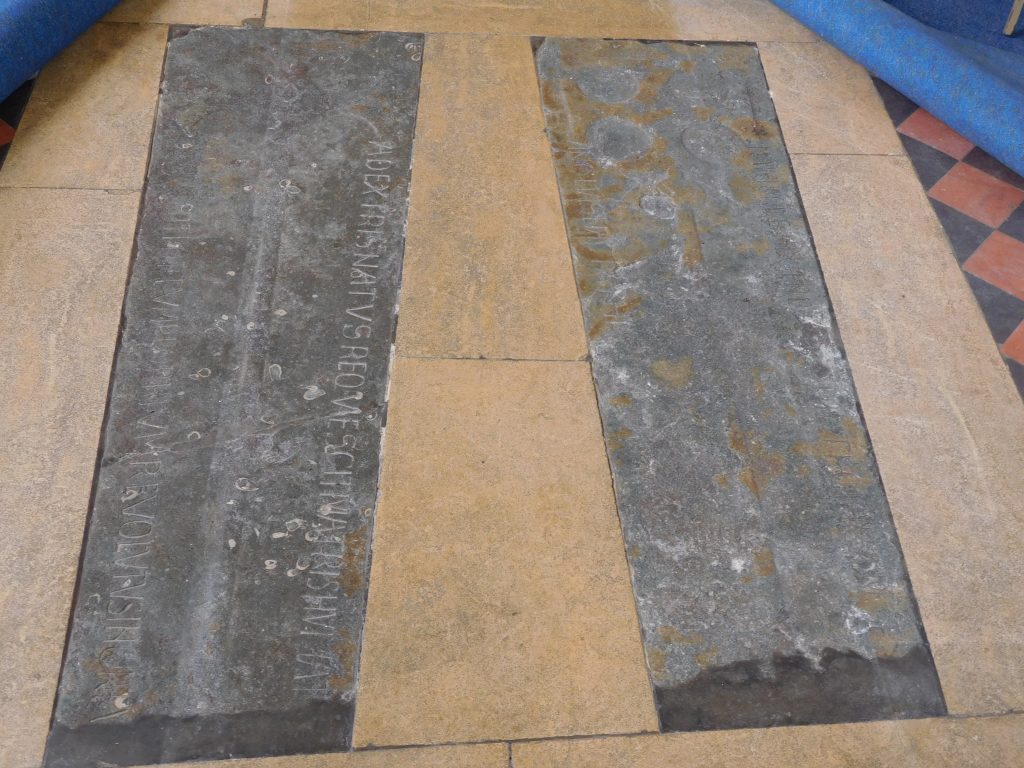
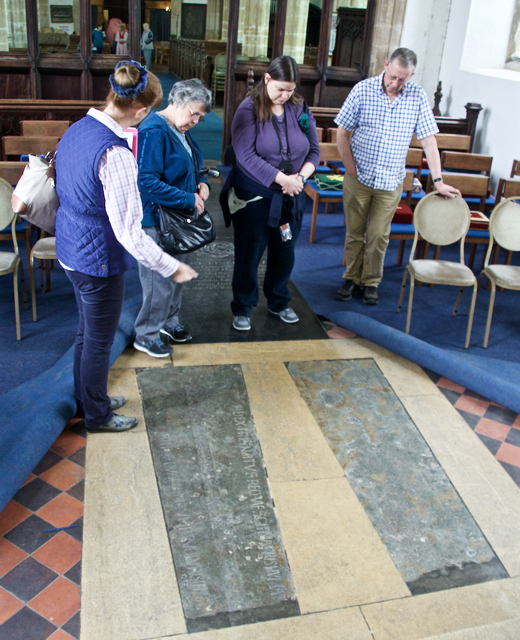
These carvings can be found close to the tombs – could they be representations of Matilda and Jacob (James).
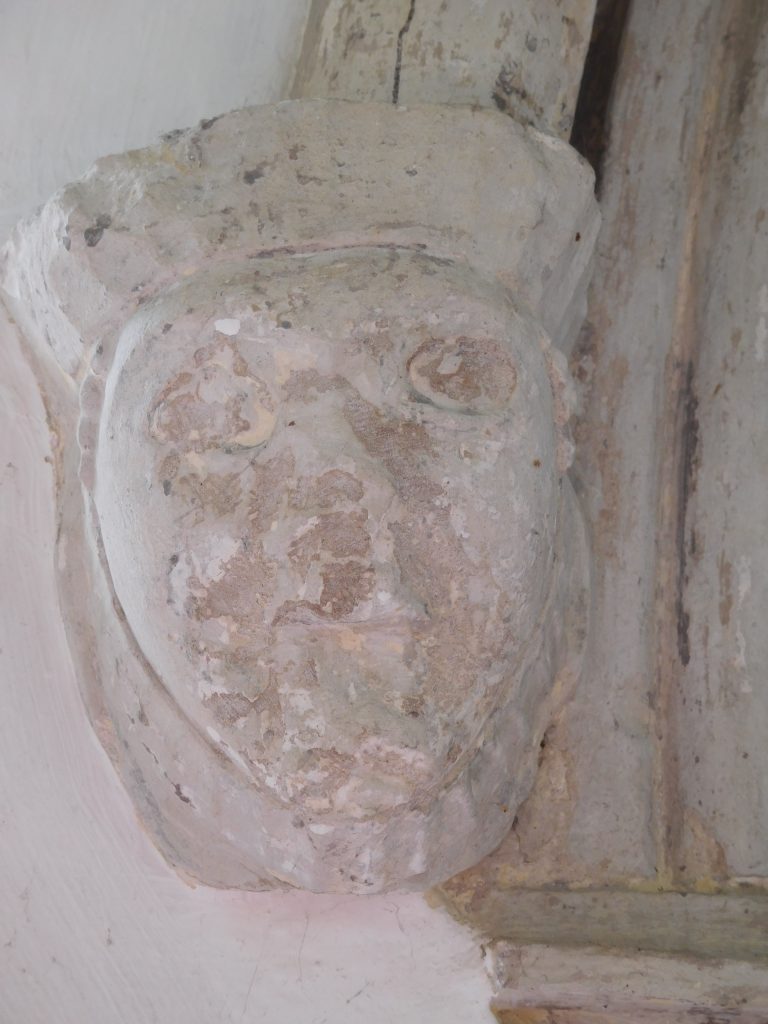

Page last Updated 27.09.2022
